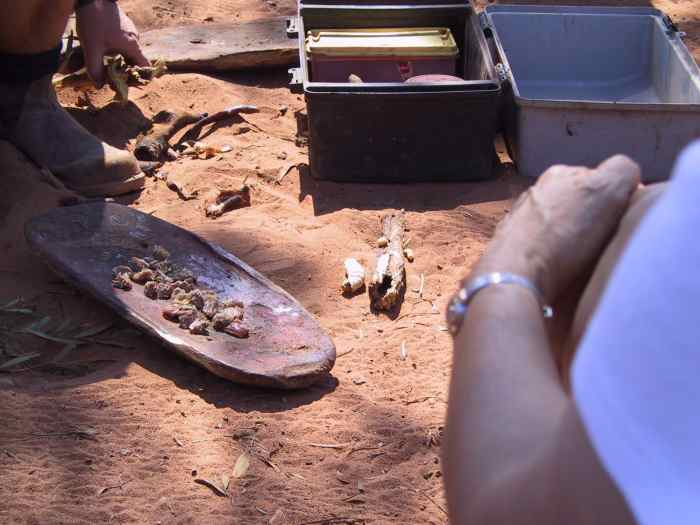
The next morning, we went out in search of breakfast (choosing not to spend a dime at the hotel). Wandering back to the town center, we found a delightful little cafe that served an "English Breakfast" - eggs done just right, toast, juice, coffee (Leslie had a nice cup of tea). Things were looking better. We then were taken out to what was billed as an "Aboriginal Dreamtime and Bushtucker Tour". This turned out to be at a bit of scrub just outside the airport, where we (and a busload of tourists on a guided tour) listened to a talk from a gentleman named Mark about the aboriginals, their history and integration (or lack thereof) into Australian society. He conveniently left out some of the less savory aspects of that "integration". Next, we had "billy tea" and Spotted Dog. Billy Tea is just loose-leaf tea made in a pail over an open fire. It features prominently in folktales about the Australian wilderness, but according to a museum display we would see later, is more a fancy than reality. Still, the tourists like it. Spotted Dog is a simple flour cake with currants (now are those currants or bugs?)
Next there was a demonstration of "bush tucker" (food) - what the aboriginals would eat - including kangaroo tail and the famous Wichetty Grub, which you can see, having been extracted out alive from the branch next to it, in the center of this photograph.

Nobody volunteered to eat the grub raw, but a few did try it cooked. Above us in a tree was a "butcher bird" that had seized piece of the kangaroo meat and was devouring it.
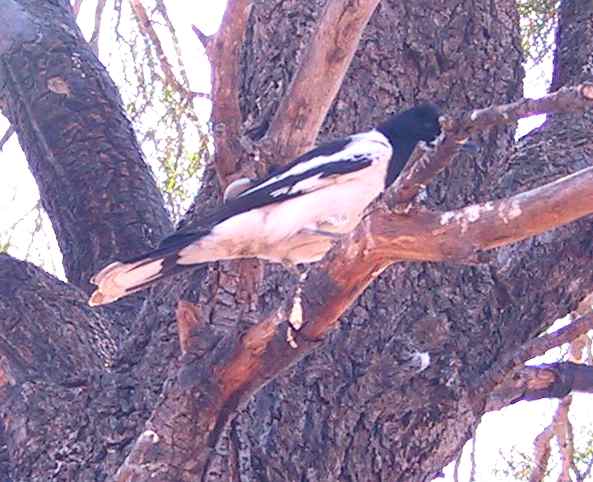
After this, we had some time to kill before our flight out, and we ended up at a Reptile Center which had fascinating examples of lizards and snakes.
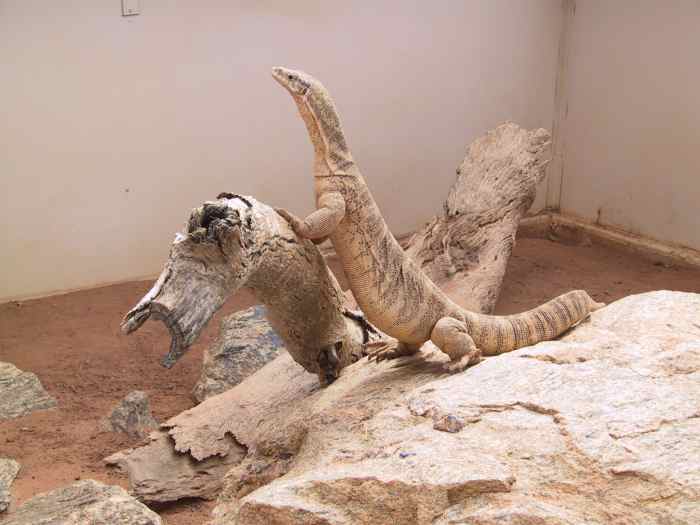
These are Thorny Devils who move jerkily, said to imitate leaves blowing across the sand.
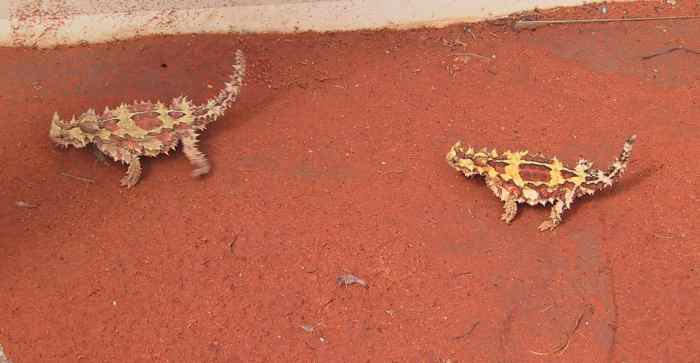
This next guy is called the "Sleepy Lizard" - when sleeping, he curls into this U shape and his tail has markings that look like a second head, which confuses some predators. He can also turn his back legs around to improve the effect, an ability said to be unique to this species.

Lastly, we got to see a Tai Pan being fed. The Tai Pan is the world's most poisonous snake, but we were told that 90% of snake bites don't inject venom (because the snake knows you're not food), and that of those that do, standardized treatment means that you have to try hard to die of a snake bite.
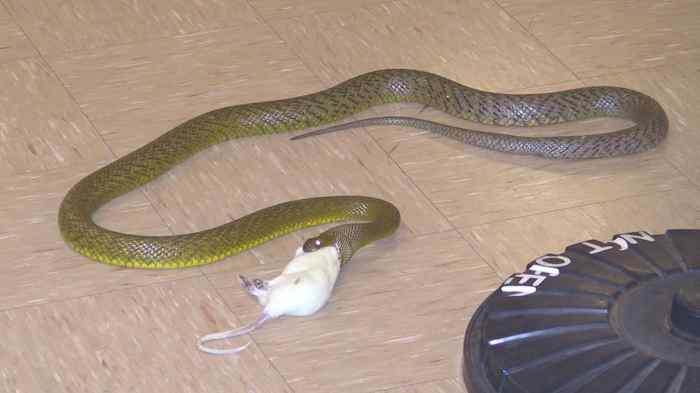
© 2002 Steve Lionel - - Home